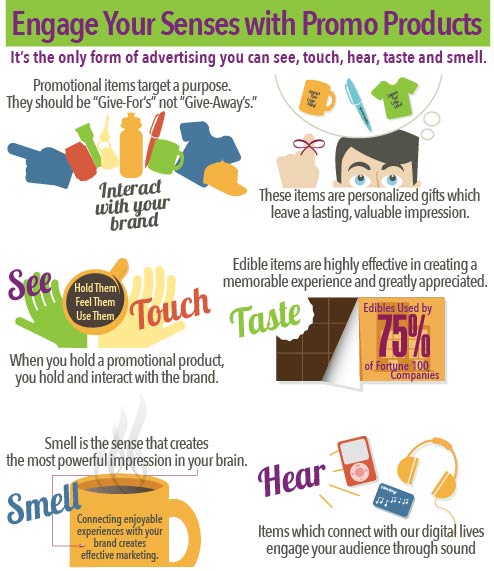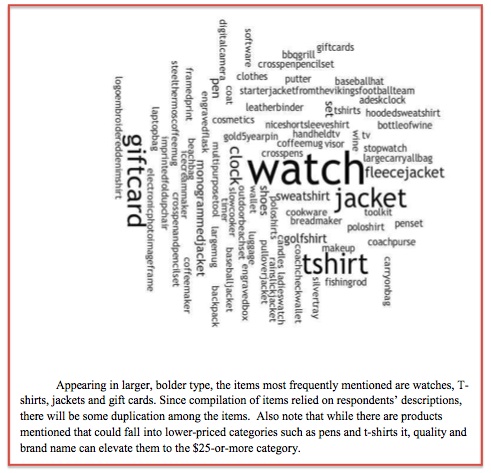Can You Feel It? Media for ALL the Senses.
These trophies, these awards, these simple little items are Sensory Media.
According to Jae M. Rang, author of Sensory Media, “Sensory media does two things: it anchors the ‘feel-good’ emotion and it rewards the participants with a gift.” When you hold sensory media – also known as a promotional product – you hold the brand.
Promotional products are responsive and tangible items. They can create or recreate an entire brand. If done correctly, sensory media can encourage, honor, influence, educate, and acknowledge everyone involved.

Companies have one goal in mind when purchasing promotional products: they want to be memorable.
Rang explains, “The reality is promotional products are a very human form of media. We’re sensory beings―we see, hear, smell, taste, touch―so ‘sensory media’ aligns so well with us. The products, as well as the messaging, represent the brand and are interactive in nature making them very impressionable.”
Sensory media demands interaction. You can eat it, write with it, wear it, smell it, and play with it. It is a constant reminder that it is much more than a branding tool and can be used to create an unforgettable foundation.
It’s time to move our perceptions of promotional products from the often-called “swag” or “trinkets” to the real, purposeful media and result-driven marketing it truly creates.



